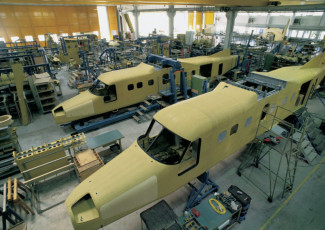5 Tips for Winning a TAACCCT Grant
By AACC Staff
June 16, 2014
Popular U.S. Department of Labor grant provides $450 million to help advance technology and manufacturing education in local communities.
In the four-plus years since President Obama signed the Health Care and Education Reconciliation Act, few programs have had a deeper, more pervasive impact on the nation’s community college campuses than the $2 billion Trade Adjustment Assistance Community College and Career Training (TAACCCT) grant program.
Administered by the U.S. Department of Labor, the program has provided funding for dozens of campus-based workforce education partnerships, all with a singular goal in mind: to connect students with job opportunities in technical, highly complex career fields. Think nanotechnology and advanced manufacturing.
Now the Labor Department is preparing to award the final $450 million TAACCCT installment, and community colleges and other eligible institutions are lining up to get their share of the funds (deadline to apply is July 7).
Looking to create a grant proposal that will help your college’s program stand out from the competition?
In an article for AACC’s Community College Daily, Gretchen Schutlz, workforce development coordinator for Tooling U-SME, a manufacturing training and development leader, offers colleges five tips for preparing a successful TAACCCT grant application.
1. Read the requirements carefully. If you have been through the grant application in previous years, don’t assume the guidelines are the same. A close review of the RFP (all 100+ pages) shows the guidelines are quite different from previous grant requirements. Be sure to address new areas in the current grant competition, such as:
- For career pathways, competency-based versus time-based education is emphasized.
- Performance-based assessments must be developed to award credit for prior learning.
- Programs and curriculum need to be employer driven (i.e., focused on addressing employers’ workforce needs).
- School consortiums must be either within the same state or, if multi-state, they must share the same regional economies.
2. Learn from approved programs. Looking at previously funded projects that are similar in scope will provide ideas on the types of approved programs as well as best practices from programs currently underway. For example, Missouri’s MoManufacturingWINs initiative involves a nine-member consortium of public two-year colleges. Moving away from a traditional job-training approach, the curriculum and structure has created an education model that establishes career pathways to fill specific employer needs in production, industrial maintenance, welding and machining. The NAM Skills Certification System is the keystone strategy of the program, and Tooling U-SME online courses are aligned with that and help students prepare for success. We have been able to link up schools from across the country to discuss best practices like this, which has helped the “newbie” applicants.
3. Integrate competency models. This time around, TAACCCT programs must include competency-based assessments and training courses. This will be valuable as the design, assessment and implementation of real-world competency frameworks can successfully bridge education with industry workforce demands. One competency model is Tooling U-SME’s Competency Framework for Achieving Manufacturing Excellence, which helps manufacturers ensure employees are meeting the job requirements at the performance levels needed to meet business objectives. Created with a cross-section of manufacturing experts and academic leaders, it builds out nine functional areas, with over 60 job specific competency models. It is customizable and offers a specially designed learning management system (LMS) for validation and record keeping to fit with the grant criteria.
4. Look for experienced partners. From online training to simulations and assessments, you will need to incorporate outside experts into your process. You may have written some into the proposal or will be looking for others after submitted. For the best results, make sure each organization understands your project goals and has experience with project management for large-scale projects. For instance, the Tooling U-SME team was involved from the start with MoManufacturingWINs, working with participating schools to build an industry-driven curriculum aligned with the NAM Skills Certification System. In addition, we worked closely with the consortium to build hierarchy and structure for an LMS that fit their needs, and coordinated and trained each individual school on account set-up, system rollout, alignment with the Tooling U-SME curriculum and implementation. The result is a standardized training program. Manufacturers are assured that students from any of the consortium schools have the skills required to perform on-the-job duties.
5. Think beyond the RFP. The team will give a collective sigh after hitting the “submit” button, but don’t stop the process there. Have confidence that your proposal will be accepted, and be prepared for the launch of the project. The execution is a major undertaking, so start by identifying and determining roles and responsibilities for each school if you are part of a consortium, and ensure individual goals tie into the overall goals of the initiative and that everyone is aligned.
To read the full article, which includes some examples of college programs that have benefitted from TAACCCT funds, visit Community College Daily.





